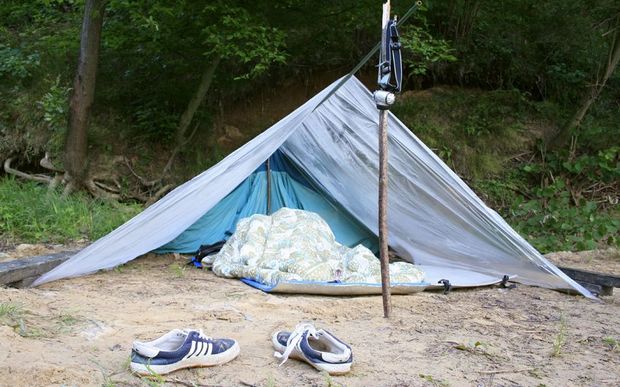First published: September 04, 2008
There is an old expression that says good fences make good neighbours. But that axiom was seriously tested recently in the tiny resort hamlet of Balm Beach, on Georgian Bay, north of Wasaga Beach.
With hundreds of onlookers applauding, an unidentified man armed with a chainsaw hacked down a fence on beachfront property recently; removing a structure some say was cutting off what many believe is a public beach. The fight continues, although the municipality said last week there is little that can be done.
It is a nightmare scenario for many people in Northumberland who own waterfront property, especially those along the west beach in Cobourg and Port Hope respectively. But, it expresses a level of frustration that many people feel towards waterfront property owners and beach users, as well as brings to light some assumptions about private property rights and public use.
Currently, Niagara Falls Liberal MPP Kim Craitor has a private members bill in front of the Ontario legislature giving the public a right of passage along the shoreline of any Great Lake between the shore and the high water mark. There is a precedent for it as the United States Supreme Court upheld the right of passage along the American side of the Great Lakes, based on historic British Common Law.
While landowners argue passionately they suffer from litter, broken bottles, needles, dog poop, partying, drug use and people lighting illegal fires on their property, many people feel there must be universal access to waterfront property. It is a complex issues to try to sort through.
It is best illustrated by the fireworks display on Canada Day. The west beach in Cobourg was packed below the boardwalk, as revelers built fires, lit fireworks, and generally enjoyed themselves waiting for the start of the town-sponsored fireworks at dusk. The beach offers an excellent vantage point. And, there is a family atmosphere.
Still, to see the fences and no trespassing signs is disturbing. The boardwalk, which stops at the fence line of the Fullerton property, is a reminder of Mayor Peter Delanty’s unfulfilled promise to negotiate a deal to complete the $80,000 structure that was meant to stretch from Legion Village to Cobourg Creek.
Port Hope finds itself embroiled in a similar fight over its west beach as Cameco encroaches on the area, leaving it almost impossible to access the area. However, the beach is so polluted, often with dead fish or e. coli, it is not open very often. People tend to use the east beach. And, with a huge industrial complex, the waterfront is less than inviting.
In the broadest terms, property ownership may seem like a fundamental right. Yet, it is not always clear. For example, anyone living or running a business in the designated heritage districts in Port Hope and Cobourg knows how strict the rules can be for renovating the outside of a building. The bylaws and provincial legislation regulate everything from the colour palette for paint to window treatments.
Also, the utility company can demand you remove a tree or trim back a bush, if it threatens a power line or blocks the meter-readers ability to take a reading.
These are two very simple examples of how property rights are subjugated for a greater good.
Then, there are examples of land use that become socially acceptable, even though it is not public property.
An example is a property owned by the Kawartha Pine Ridge District School board on Kerr Street in Cobourg. The undeveloped property extends back, behind a number of homes, with an access on to Westwood near Burwash Street. For neighbourhood residents, the property has become an unofficial compost heap where many residents take yard waste, grass clippings and other organic material to dump.
Last week, a letter from the school board was delivered to residents saying the dumping should stop, following complaints from anonymous residents. For years, there was no problem. Now, because of some vague concerns, this convenience for so many must be halted.
Here is where the issue becomes so complex. There was a time when people did not worry so much about people using what might be deemed private property. While it may be privately owned, the public use was generally responsible, so there was no problem if others used it.
As a young boy, going to our family cottage near Balm Beach, walking along the beach was a tradition. Each evening, we would stroll along the sandy area, near the water, talking, laughing and enjoying the gorgeous sunset. We would stop; get ice cream and walk back. There was never any litter, broken glass or needles. Fires were regular occurrences, as family, friends, and non-property owners would enjoy a wiener roast and sing song on the beach.
We should still be able to do this. It makes sense to remove the bad apples from the barrel rather than throw it all out.
By allowing development and use of lands so close to the waterfront, it gives people the wrong impression. The condos and businesses near the harbour give the impression one is crossing someone’s front yard. Even space that is deemed public, no longer feels that way.
Municipal politicians must get serious about protecting the rights of people to access public waterfront space. A more imposing police presence is needed to punish those who do not respect this important space. And, public works crews need to help clean up the mess on a regular basis when there is a problem.
But it comes back to individuals. This issue cuts two ways and both sides need to show more respect for the other. We cannot lose public access to waterfront lands and those who use them must respect owners. It will be up to politicians to ensure this balance exists, not bury their heads in the sand.


